Trail cameras, game cameras, wildlife cams, or trail cams are used for hunting game and outdoor wildlife viewing. They’re the choice tools of the trade for wildlife enthusiasts, nature photographers, and hunters.
But how do trail cameras work?
Trail cameras use battery power and infrared or LED technology to capture images with incredible speed. They have a heat-detecting motion sensor that triggers the camera to capture movement while the infrared emits a tiny glow with minimal disturbance. The footage is stored on a memory card for easy downloading and review.
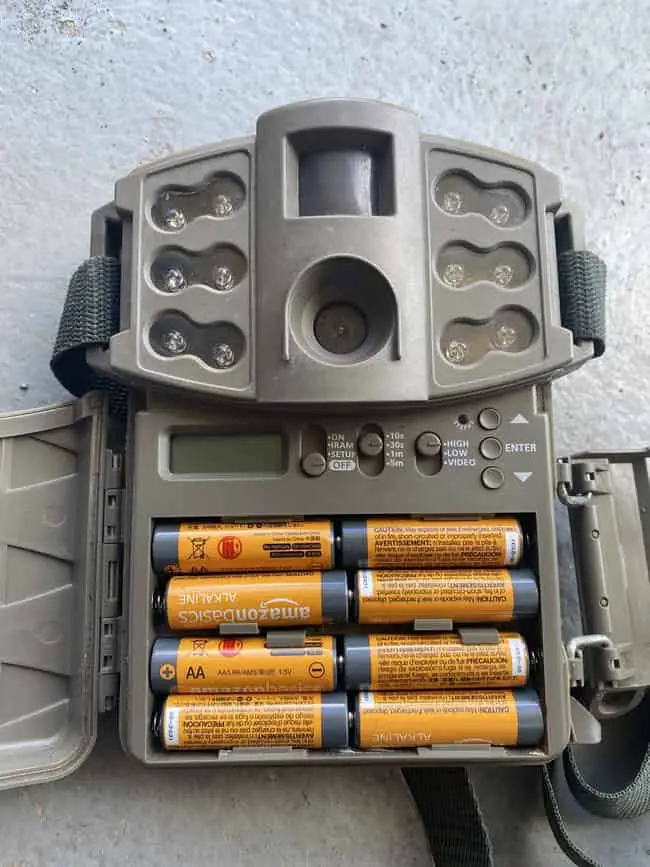
In this article, you’ll learn all about trail cameras, including how they work, the different types available, and their uses. You’ll also find answers to frequently asked questions on trail cameras.
Table of Contents
- How Do Wildlife Trail Cameras Work?
- What Are They Used For?
- What Are the Main Features/Functions of Trail Cams?
- What Are the Different Types of Trail Cameras?
- Frequently Asked Questions
- Final Thoughts
How Do Wildlife Trail Cameras Work?
Wildlife trail cameras use infrared technology to capture a target’s image and location. Powered by batteries, these lightning-fast gadgets can catch images at impressive speeds and with great stealth. The cameras sport a heat-detecting motion sensor that activates the camera to capture movement.
These weatherproof devices can take photos, film videos, or even capture a time-lapse. They sport a detection field (motion range) of 50-100 feet (15.2- 30.4 m) and provide excellent image quality and high resolution on bright or cloudy days.
Game cameras also offer different storage options, such as wireless and on SD memory cards.
To illustrate how they work as hunting accessories, a hunter usually mounts a game on a tree that overlooks a trail or feeding area.
The camera’s motion sensors detect a deer or other animal that walks into the area and take a photo or video. The footage bears a time-stamp, allowing you to determine when the game appears.
In other words, they are a tool used by hunters, outdoor enthusiasts, and homeowners to see what is passing by. They act as an extra set of eyes and ears in the woods, and provide information in the form of pics and video.
What Are They Used For?
Trail cameras are used for various reasons. But their primary use is in hunting (scouting), viewing outdoor wildlife, wildlife photography, and even surveillance.
Originally invented for scientific research — to track wild animals in their natural habitat with the slightest disturbance — they’ve since evolved into handy devices suitable for multiple purposes.
Apart from the various uses mentioned above, wildlife cameras are also great options for the following purposes:
- Sports photograpy
- Outdoor home security. They can enable you to capture anything that might happen, such as an image of a trespasser.
- Camping in the woods. They can help you monitor any wildlife in your vicinity.
What Are the Main Features/Functions of Trail Cams?
The main features of trail cameras are the motion sensor, batteries, infrared emitters, lens, and SD card. These principal components are what enable the cam to function as it does.
Let’s explore each feature:
Motion Sensor
A good trail camera has a sensor that’s quick in detecting movement and heat, and it should also be fast in collecting footage from its field of view. High-quality game cameras boast minimal time between taking a shot and being ready for the next.
While different trail cameras detect motion at different ranges, the proper range depends on your needs, the area, and the number of cameras in use. The camera angle is also critical.
Think of a running deer- it may pass by a trail camera in a fraction of a second. The best trail cameras will have a fast motion sensor and trigger speed to quickly capture a photo before the deer is out of frame.
Batteries
Game cameras are designed for long battery life. Many of them come with rechargeable batteries, which are cost-effective and environmentally friendly. When using a trail camera, you want to use long-lasting batteries and not have to worry about whether your camera will die out in the woods.
Trail cameras today most commonly run on AA batteries or AAA batteries. And with different settings and features, they can last up to a full year in the woods quietly taking photos of game.
Infrared Emitters
Trail cameras are also capable of taking high-quality pictures at night, thanks to Infrared technology.
They transmit infrared light that emits a minimal glow if any. This allows just enough light to take a picture, without spooking the animal.
This makes detection almost impossible. The higher the quality of your infrared emitters, the more stealth your camera will have. This is very important to hunters, especially who don’t want to spook deer!
LED mounted trail cameras capture clearer and colored night photos compared to infrared cameras.
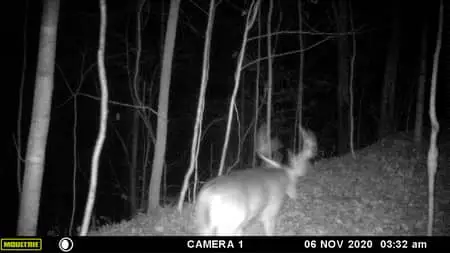
NOTE: Infrared cameras only support black and white night images that can get blurry when a deer or animal is in motion.
Lens and SD Card
The lens quality is the real game-changer in the type of shots captured by a game camera. A good lens is clear and smooth. It shouldn’t fog up or get damaged easily. If your camera has a high megapixel count but a bad lens, it’ll take photos with poor resolution.
Trail cameras also need to take and store a lot of footage (photos or video clips) in the shortest time possible. Therefore, an ideal SD card should have lots of storage space to store this footage.
Other Features
Additional trail cams features that allow them to work effectively include the following below:
- Video capability. While not all game cameras possess video capability, those that do capture 10-90 second videos whenever the sensors detect motion. Some trail cameras come equipped with both video and audio. HD video provides a clearer image, more so at night. For best results, go for a trail camera with at least 720p.
- Resolution. If you use your wildlife cam to take wildlife pictures or videos, you’ll want high-quality images. The higher your game camera’s resolution, the clearer and sharper the footage will be. A video resolution featuring 720p to 1080p is an excellent choice if you want to view the game’s finer details moving through an area.
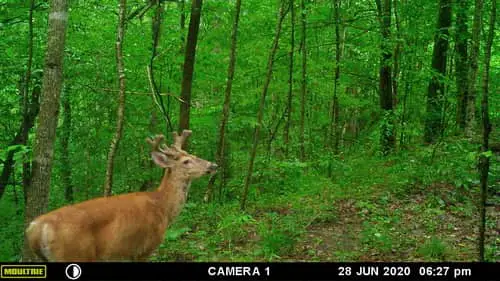
- Trigger speed. This refers to the time a camera takes to capture a shot after detecting motion. It’s vital when capturing a moving target since you only have a fraction of a second. A slow camera might not capture a buck passing by, or it might only catch the behind. The fastest trigger speeds are typically 0.14 seconds, while some cameras allow multiple shots, ensuring you get at least one perfect picture out of numerous photos.
- Recovery time. This is the minimum time a game camera takes to capture another image. Game cameras sport varying recovery times, but in general, cameras with short recovery times are best for capturing deer passing in groups. On the other hand, longer recovery times are more suitable for viewing food plots.
- Camera range. This is the area a target needs to pass through to trigger the camera. Since the motion sensors sense the target rather than “see” it, the range remains the same whether during the day or night.
- Flash type. This determines how the captured photos look and how noticeable the camera gets. Game cameras come with a white flash, black flash, or infrared flash. When buying a trail camera, ensure that it sports the correct flash type to suit its purpose. If hunting deer, you want to use a covert camera, thus infrared flash. If not, the bright light emitted by white flash cameras will alert the deer or scare them away.
- Cellular capability. Some trail cams can be configured to allow you to send photo and video footage to your cell phone. Such cameras are useful for security purposes, particularly if you are keen on monitoring your property.
What Are the Different Types of Trail Cameras?
There are two primary types of trail cameras. Traditional and Cellular. Traditional Cameras do not ‘send’ pictures and require a physical download of the SD card contents. Cellular trail cameras upload photos to an app or website, which means you can view your photos anywhere there is adequate service.
Let’s take a deeper look at each:
Non-Cellular Trail Cameras
A non-cellular trail camera is the traditional type of game camera. It takes a photo each time it senses movement in front of the camera. It then saves the captured images to a memory card for later retrieval.
Some non-cellular trail cameras can record brief video clips, allowing you to see how a target animal behaves or moves through an area.
Non-cellular game cameras are typically cheaper than cellular cameras. However, in order to view the images, you have to go up to where you’ve mounted the camera and retrieve the SD card.
You’ll also need to purchase an SD card reader to enable you to view the photos and videos on your phone.
Cellular Trail Cameras
Cellular cameras started hitting the mainstream market in late 2019 and early 2020. They work just like regular trail cameras. Each time the camera sensor detects motion, they capture an image and store the photos on a memory card…
But that’s not all. A cellular trail camera goes further than that. It can send you pictures through text and email at any time and from any location.
Using data, the camera uploads the image to the internet, making it possible to view them on your smartphone or laptop. Some cellular game cameras even allow you to alter the camera’s settings via your phone from any location.
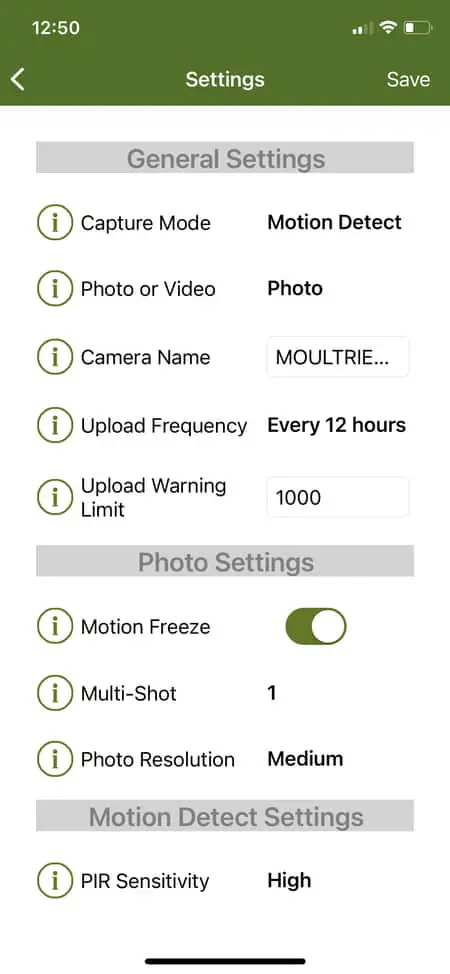
The ability to send images directly to your phone makes cellular game cameras a great tool for busy hunters because they don’t have to go around checking on their cameras.
Imagine sitting at home on a rainy day, and you get a notification that a deer just walked by your treestand? Pretty cool!
They’re also ideal for homeowners interested in having continuous monitoring of their property or for scouting across state lines or remote locations.
Frequently Asked Questions
Below are answers to some commonly asked questions regarding trail cameras:
What Is the Difference Between a Game Camera and a Trail Camera?
There’s no difference between a game camera and a trail camera. Game cameras are also called trail cameras. They’re also referred to as trail cams or wildlife cams. They all enable you to capture a target’s image and location.
Can You Detect Trail Cameras?
You cannot detect trail cameras. Once triggered, trail cameras emit an infrared flash, enabling the camera to capture photos without emitting visible light. Few animals can see an infrared flash, and the human eye cannot detect it.
How Far Do Game Cameras Work?
A game camera’s detection range can be anywhere between 10 feet and 60 feet (12.19 meters and 36.57 meters). The length and accuracy of detection is directly related to the price and quality of the camera.
Do Trail Cameras Need Wi-Fi?
Most trail cameras do not require Wi-Fi to operate, although this is a feature on certain models to upload photos remotely over a Wifi or cellular network.
How Do I Choose a Good Trail Camera?
Choose a camera that has the best features for your intended use. Trigger speed, photo resolution, and battery life are important features to consider.
For me personally, I use my trail cameras exclusively to scout for deer hunting. So I want something with a quick trigger speed (motion sensor), that takes good quality photos at day and night when deer are moving.
Do Trail Cameras Work Through Glass?
Yes, trail cameras can work through glass, however, you may get some reflection in your photos from the flash, infrared, or LED lights.
Final Thoughts
Trail cameras or game cams (same thing) have really revolutionized the outdoor industry in the past 10-15 years, especially on public lands.. They’ve given hunters and wildlife enthusiasts the ability to see, and document an area without having to physically be there.
They’ve become quite affordable with beginner models starting as cheap as $29, and you can have them set up and running in just a few minutes.
I hope this article helped you understand how trail cameras work, their uses, and their important features.
Thanks very much for reading!
- Neem Oil Deer Repellent: Does It Really Work?

- Is It Okay To Burn Bark In a Wood Stove?

- Do Deer Eat Morel Mushrooms?
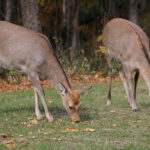
- How To Properly Dispose of Wood Stove Ashes (Safely!)
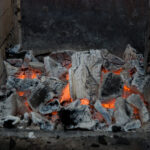
- Is Fatwood Safe for Wood Stoves? Here’s What You Should Know

- Is Beaver Good to Eat? You May Be Surprised!

- Is Bread Bad For Deer? Here’s What You Should Know

- Are Roosters Good to Eat?

- 3 Easy Ways To Tell If Your Wood Stove Is Leaking

